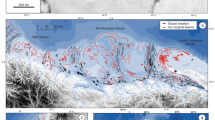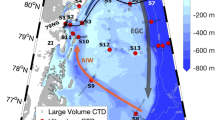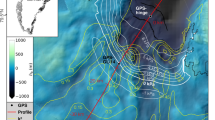Abstract
FIG. 1 compares eustatic data from New Zealand with a generalized eustatic curve calculated from raised strandlines in Sweden and Norway1. The Fennoscandian region is undergoing isostatic rebound initiated by the retreat and melting of the Fenno scandian ice-cap, so that the Post-glacial raised strand-lines owe their positions to the combination of two effects, changes in both land- and sea-level. The basic assumption behind the calculated eustatic curve (Fig. 1) is that the rates of isostatic rebound have been proportional from place to place—the raised strand-lines used being from areas between Sauramo's Finniglacial and Gotiglacial hingelines2,3.
This is a preview of subscription content, access via your institution
Access options
Subscribe to this journal
Receive 51 print issues and online access
$199.00 per year
only $3.90 per issue
Buy this article
- Purchase on SpringerLink
- Instant access to full article PDF
Prices may be subject to local taxes which are calculated during checkout
Similar content being viewed by others
References
Anderson, B. G., N.G.U., 210 (1960).
Sauramo, M., Bull. Comm. Geol. Finland, 125, 39 (1939).
Sauramo, M., Ann. Acad. Sci. Fennicae, AIII, 44 (1955).
Schofield, J. C., Nature, 185, 836 (1960).
Schofield, J. C., N.Z. J. Geol. Geophys., 3, 467 (1960).
Godwin, H., Suggate, R. P., and Willis, E. H., Nature, 181, 1518 (1958).
McFarlan, E., Geol. Soc. Amer. Bull., 72, 129 (1961).
Fairbridge, R. W., in Ahrens, L. H., et al., Physic and Chemistry of the Earth, 4, 99 (1961).
Author information
Authors and Affiliations
Rights and permissions
About this article
Cite this article
SCHOFIELD, J. Post-Glacial Sea-Levels. Nature 195, 1191 (1962). https://doi.org/10.1038/1951191a0
Issue date:
DOI: https://doi.org/10.1038/1951191a0
This article is cited by
-
Delayed Isostatic Response and High Sea-levels
Nature (1964)



